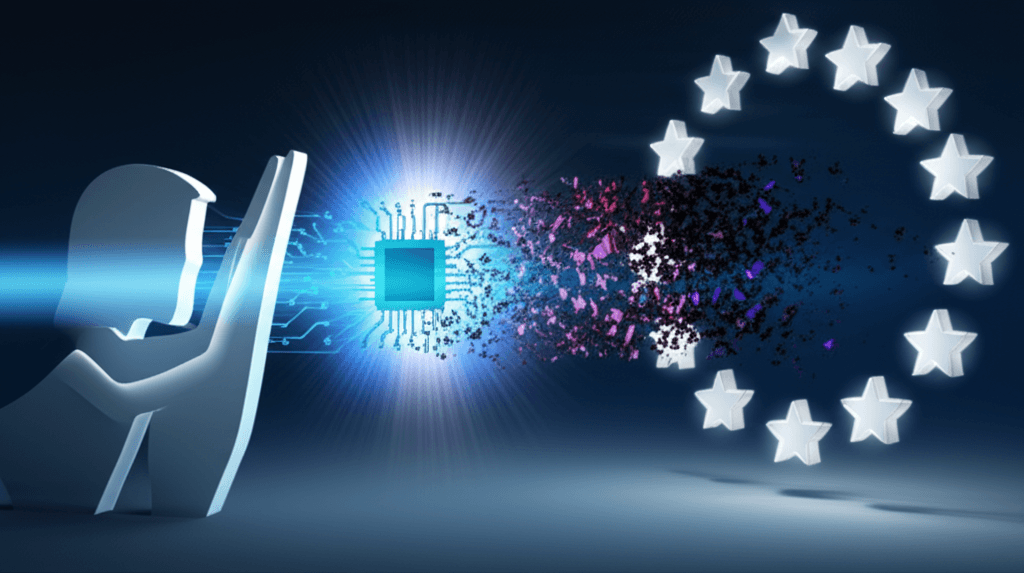EU Parliament Criminalizes AI-Generated Child Sex Abuse
The EU criminalizes AI-generated child abuse that is indistinguishable from real, compelling tech to safeguard against its dark potential.
July 10, 2025

The European Union is taking a decisive stand against the escalating proliferation of artificially generated child sexual abuse material, a dark byproduct of rapid advancements in AI technology. With an overwhelming majority vote, the European Parliament has moved to criminalize the creation, possession, and distribution of synthetic media depicting child sexual abuse, treating it with the same legal gravity as material showing real-life abuse.[1][2][3] This legislative push comes in response to alarming reports from digital safety organizations, which highlight a dramatic and accelerating increase in the volume and realism of AI-generated child sexual abuse material, known as CSAM.[4][5] The move signals a critical attempt to close a legal loophole and confront a threat that experts warn not only normalizes the sexualization of children but also poses significant challenges to law enforcement and has the potential to revictimize survivors of past abuse.[1][6][7]
The scale of the problem has been starkly illustrated by watchdog groups like the Internet Watch Foundation (IWF). The IWF has documented a massive surge in this type of content, observing thousands of newly created AI images on a single dark web forum and noting a more than 1,000% increase in the generation of such material over the last year.[4][5] Early in 2023, AI-generated images often had clear "tells," such as distorted backgrounds or incorrect body proportions, but the technology has evolved at a breathtaking pace.[7] Now, the most convincing synthetic images are visually indistinguishable from photographs of real abuse, even to highly trained analysts.[4][7] This hyper-realism complicates detection and poses a significant risk of desensitizing viewers, which some research suggests can be a precursor to committing real-world contact offenses.[1][2] Furthermore, there is growing evidence that perpetrators are using AI to create images of known child abuse victims, as well as famous children or children known to them personally, adding a layer of targeted revictimization.[4][6][7] The threat is also evolving beyond static images, with the first realistic "deepfake" videos depicting the sexual abuse of children beginning to surface.[4]
In response to this rapidly growing crisis, the European Parliament's new directive aims to create a comprehensive and harmonized legal framework across all 27 member states.[2] Approved by a vote of 599 to two with 62 abstentions, the directive explicitly criminalizes AI-generated CSAM, closing a gap that previously allowed for ambiguity in how purely synthetic images were treated under the law.[1][3][8] Beyond this central provision, the directive also broadens its scope to tackle other forms of online child exploitation, establishing EU-wide definitions for crimes like grooming and sextortion, addressing livestreamed abuse, and banning "paedophile handbooks" that provide guidance on how to exploit children.[1][2][8] In a significant move to support survivors, the new rules also remove the statute of limitations for prosecuting child sexual abuse crimes, a crucial change given that the average age of disclosure for victims is 52 years old.[6][5][9]
The directive, however, is not yet law. It must now enter "trilogue" negotiations between the Parliament, the European Council (representing national governments), and the European Commission to finalize the text.[2][3][8] A key point of contention will be the Council's earlier, more cautious position, which stopped short of explicitly criminalizing fully synthetic CSAM.[1][8] Child protection organizations and technology industry bodies have jointly urged member states to align with the Parliament's more robust stance, arguing that any form of child abuse imagery, regardless of its origin, perpetuates harm and fuels demand.[2][10] The legislative process is further complicated by the need to reconcile differing ages of consent across EU member states.[1][8] This new directive complements the broader EU AI Act, which has already entered into force and includes provisions to protect children by banning AI systems that exploit age-related vulnerabilities and classifying educational AI as "high-risk."[11][12][13]
The implications of this legislative push are significant for the AI industry. Companies developing generative AI models will face heightened scrutiny and legal responsibility. The directive could criminalize not just the end-product but also the development and distribution of AI systems specifically designed or primarily adapted to create CSAM.[6][14] This places a greater onus on tech firms to implement robust safeguards, content moderation protocols, and ethical design principles from the outset.[15][16] The challenge is immense, as it requires not only detecting and removing illegal content but also preventing AI models from being trained on real CSAM in the first place, a process that can lead to the models "memorizing" and replicating the abusive material.[17] As legislators work to keep pace with technology, the AI industry is being compelled to take a more proactive and central role in the fight against a dark and dangerous application of its innovations.[18][19] The final form of the EU's directive will be closely watched globally as a benchmark for how societies can legally and ethically confront the menacing intersection of artificial intelligence and child exploitation.
Sources
[4]
[7]
[8]
[10]
[12]
[13]
[14]
[15]
[16]
[17]
[19]